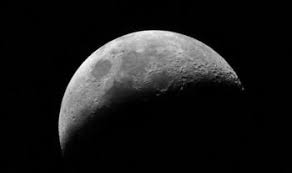
Breaking News
 Harbor Freight Coverpro 12x20 made into a Metal Building part 2
Harbor Freight Coverpro 12x20 made into a Metal Building part 2
 Brian Cole BUSTED, Halle Berry NUKES Newsom + Candace REJECTS TPUSA Challenge...
Brian Cole BUSTED, Halle Berry NUKES Newsom + Candace REJECTS TPUSA Challenge...
 I spent my Thanksgiving in the emergency rom... Medical emergencies can pop up at any time.
I spent my Thanksgiving in the emergency rom... Medical emergencies can pop up at any time.
 The "Golden Age" of Job Layoffs?
The "Golden Age" of Job Layoffs?
Top Tech News
 Build a Greenhouse HEATER that Lasts 10-15 DAYS!
Build a Greenhouse HEATER that Lasts 10-15 DAYS!
 Look at the genius idea he came up with using this tank that nobody wanted
Look at the genius idea he came up with using this tank that nobody wanted
 Latest Comet 3I Atlas Anomolies Like the Impossible 600,000 Mile Long Sunward Tail
Latest Comet 3I Atlas Anomolies Like the Impossible 600,000 Mile Long Sunward Tail
 Tesla Just Opened Its Biggest Supercharger Station Ever--And It's Powered By Solar And Batteries
Tesla Just Opened Its Biggest Supercharger Station Ever--And It's Powered By Solar And Batteries
 Your body already knows how to regrow limbs. We just haven't figured out how to turn it on yet.
Your body already knows how to regrow limbs. We just haven't figured out how to turn it on yet.
 We've wiretapped the gut-brain hotline to decode signals driving disease
We've wiretapped the gut-brain hotline to decode signals driving disease
 3D-printable concrete alternative hardens in three days, not four weeks
3D-printable concrete alternative hardens in three days, not four weeks
 Could satellite-beaming planes and airships make SpaceX's Starlink obsolete?
Could satellite-beaming planes and airships make SpaceX's Starlink obsolete?
China Preps for Launch of Historic Mission to Moon's Far Side on Friday

China is getting set to launch the first-ever surface mission to the moon's far side.
The robotic Chang'e 4 mission is scheduled to launch atop a Long March 3B rocket on Friday (Dec. 7) at around 1:30 p.m. EST (1830 GMT; 2:30 a.m. on Dec. 8 local China time).
If all goes according to plan, Chang'e 4's lander-rover duo will touch down within the moon's South Pole?Aitken (SPA) basin after a 27-day flight, then study both the surface and subsurface of this region. [China's Moon Missions Explained (Infographic)]
Both the lander and the rover were designed as backups for China's successful Chang'e 3 mission, which put a lander and a rover named Yutu down on the moon in December 2013.
As a prelude to the Chang'e 4, China launched the Queqiao relay satellite this past May. Queqiao is now positioned at the Earth-moon L2 Lagrange point — a place where the spacecraft can handle communications between ground controllers and the lander-rover mission on the far side.
China's Yutu moon rover, photographed on the lunar surface by the Chang'e 3 lander on Dec. 16, 2013. The Chang'e 4 mission to the lunar far side, which is scheduled to launch on Dec. 7, 2018, was designed as a backup for Chang'e 3.
Credit: CASC/China Ministry of Defense
Lots of scientific gear
Chang'e 4 is expected to touch down in Von Kármán Crater, within the SPA basin.
In a study published last month, Yingzhuo Jia, of the University of Chinese Academy of Sciences, and colleagues laid out the mission's chief scientific objectives. (Jia is also with the State Key Laboratory of Space Weather, National Space Science Center of the Chinese Academy of Sciences.)

 First totally synthetic human brain model has been realized
First totally synthetic human brain model has been realized Mach-23 potato gun to shoot satellites into space
Mach-23 potato gun to shoot satellites into space


